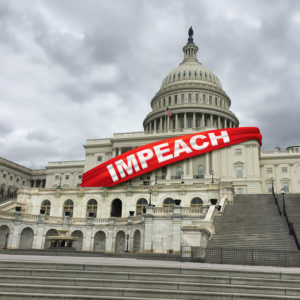If you are one of the few Americans actually paying attention to the impeachment inquiry hearings, you may have noticed something: the U.S. government has a really big bureaucracy, which, in and of itself, poses a direct threat to “We the People.”
Regardless of your view on impeachment, the hearings have exposed the breathtaking size and scope of the U.S. government’s bureaucratic arm.
Just how big is the bureaucracy? As of 2019, the federal government employed more than 2.1 million full-time workers. This does not include the more than 600,000 employees of the Postal Service, which is a quasi-government agency.
For comparison’s sake, consider this brief timeline: In 1933, when President Franklin Delano Roosevelt entered the Oval Office, the federal bureaucracy included about 500,000 full-time workers.
Then this happened: According to UShistory.org, “The largest growth of the bureaucracy in American history came between 1933 and 1945. Franklin Roosevelt’s New Deal meant bigger government, since agencies were needed to administer his many programs. With the American entry into World War II in 1941, the needs of the war elevated the number of federal agencies and employees even more. During those 12 Roosevelt years, the total number of federal employees increased from a little over half a million in 1933 to an all-time high of more than 3.5 million in 1945.”
Keep in mind that in 1943 the U.S. military was engaged in a global conflict against two superpowers.
“After World War II ended in 1945, the total number of federal employees decreased significantly, but still has remained at levels between about 2.5 million and 3 million. Contrary to popular opinion, the federal bureaucracy did not grow in numbers significantly during the last half of the 20th century. Federal bureaucrats did, however, greatly increase their influence,” notes UShistory.org.
Since the end of WWII, the federal bureaucracy has increased its influence because several Cabinet departments have been created. Here is a quick summary.
In 1953, the Department of Health and Human Services was created. HHS currently employs about 80,000 bureaucrats and has a budget that exceeds $1 trillion annually.
Twelve years later, President Lyndon Johnson put the federal bureaucracy on steroids during his quest to build the Great Society. In 1965, the Department of Housing and Urban Development was christened. It now employs more than 8,000 government workers and has a budget of more than $32 billion.
Johnson also oversaw the addition of the Department of Transportation in 1967. DOT currently provides more than 58,000 well-paying jobs and has a total budget that exceeds $72 billion per year.
During President Jimmy Carter’s term, he was able to increase the bureaucracy quite extensively. We can thank Carter for the departments of energy and education. These two departments now employ about 13,000 and 4,000 bureaucrats, respectively. Each year, these two departments spend close to $100 billion combined.
In 2002, following the 9/11 terrorist attacks, President George W. Bush created the Department of Homeland Security. This mammoth agency houses more than 229,000 government workers, at an average cost of $48 billion annually.
The constant growth of the bureaucracy is a direct threat to the vitality of America’s founding principles. For instance, an enlarged bureaucracy blunts the notion of popular sovereignty because bureaucrats are unelected and therefore unaccountable to voters.
A big bureaucracy is also antithetical to republicanism, limited government, separation of powers, and the system of checks and balances, which are all meant to maintain the integrity and preservation of the American Experiment.
Lastly, and perhaps most ominously, a big bureaucracy flies in the face of federalism. In other words, the more power that is concentrated in the nation’s capital in the form of a giant leviathan bureaucracy, the less power available at the state and local levels — which is exactly what the Founding Fathers feared.
Ronald Reagan once said, “Unless bureaucracy is constantly resisted, it breaks down representative government and overwhelms democracy.” As the impeachment hearings have revealed, the threats of a big bureaucracy are more apparent than ever.

